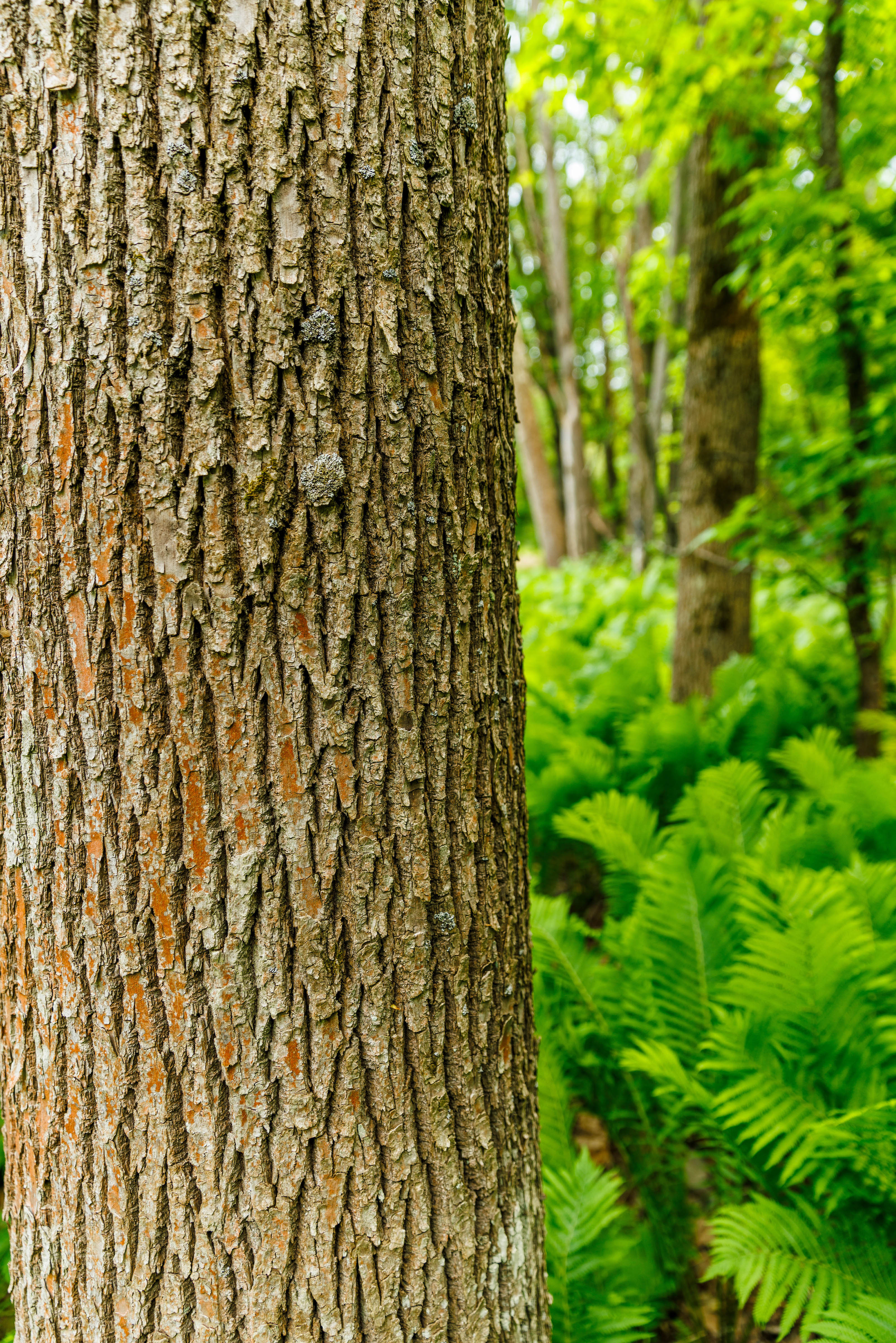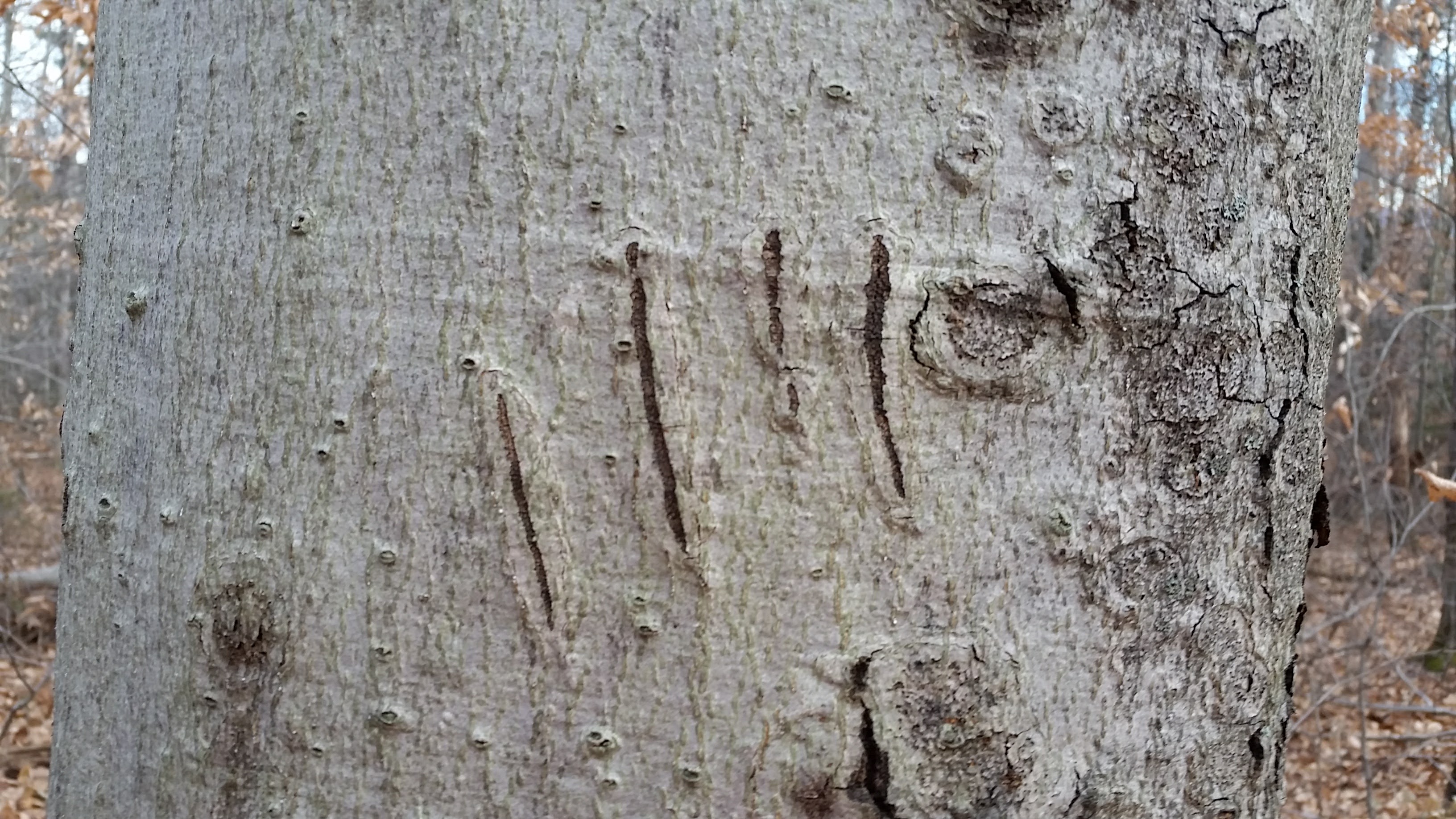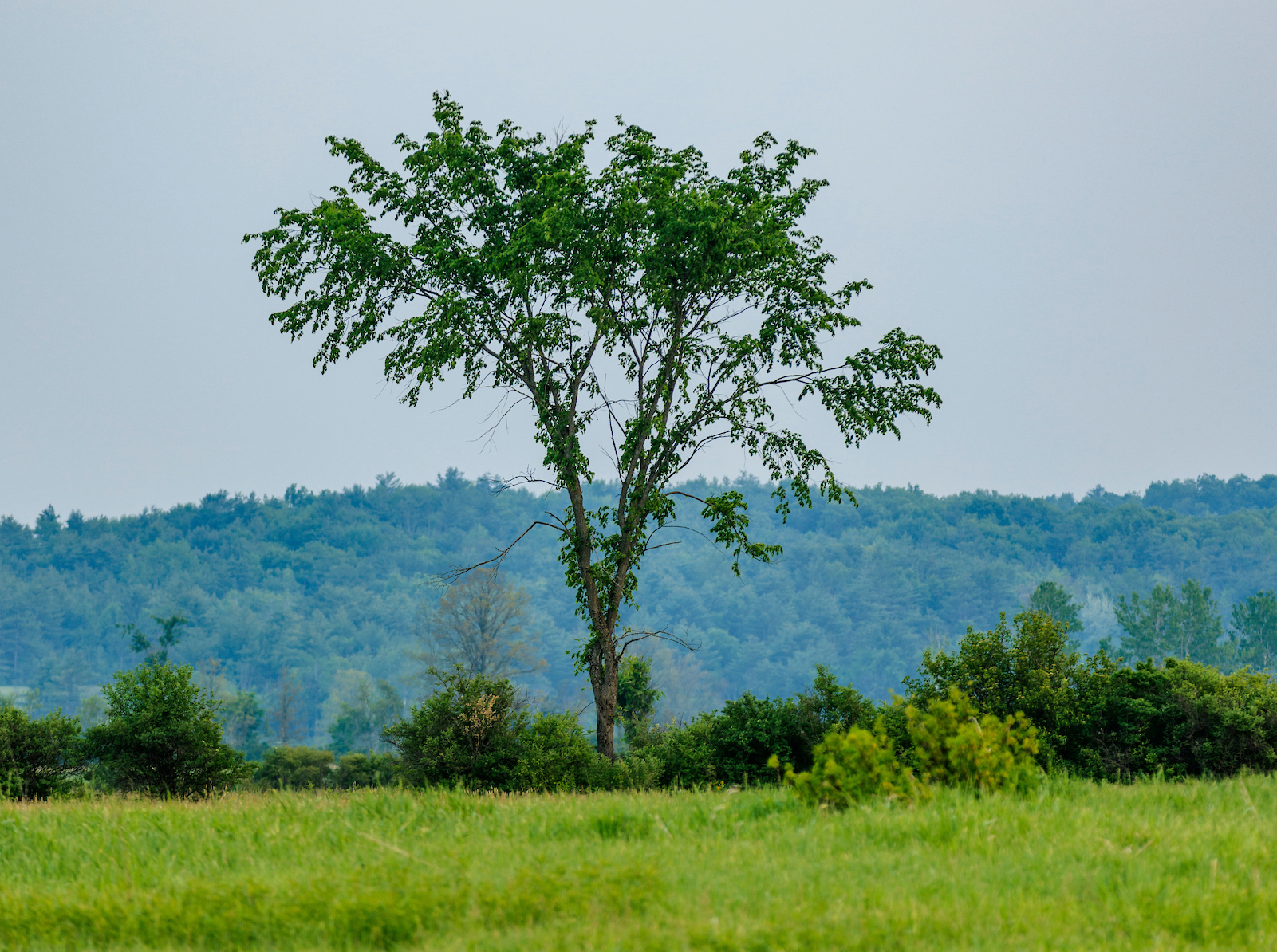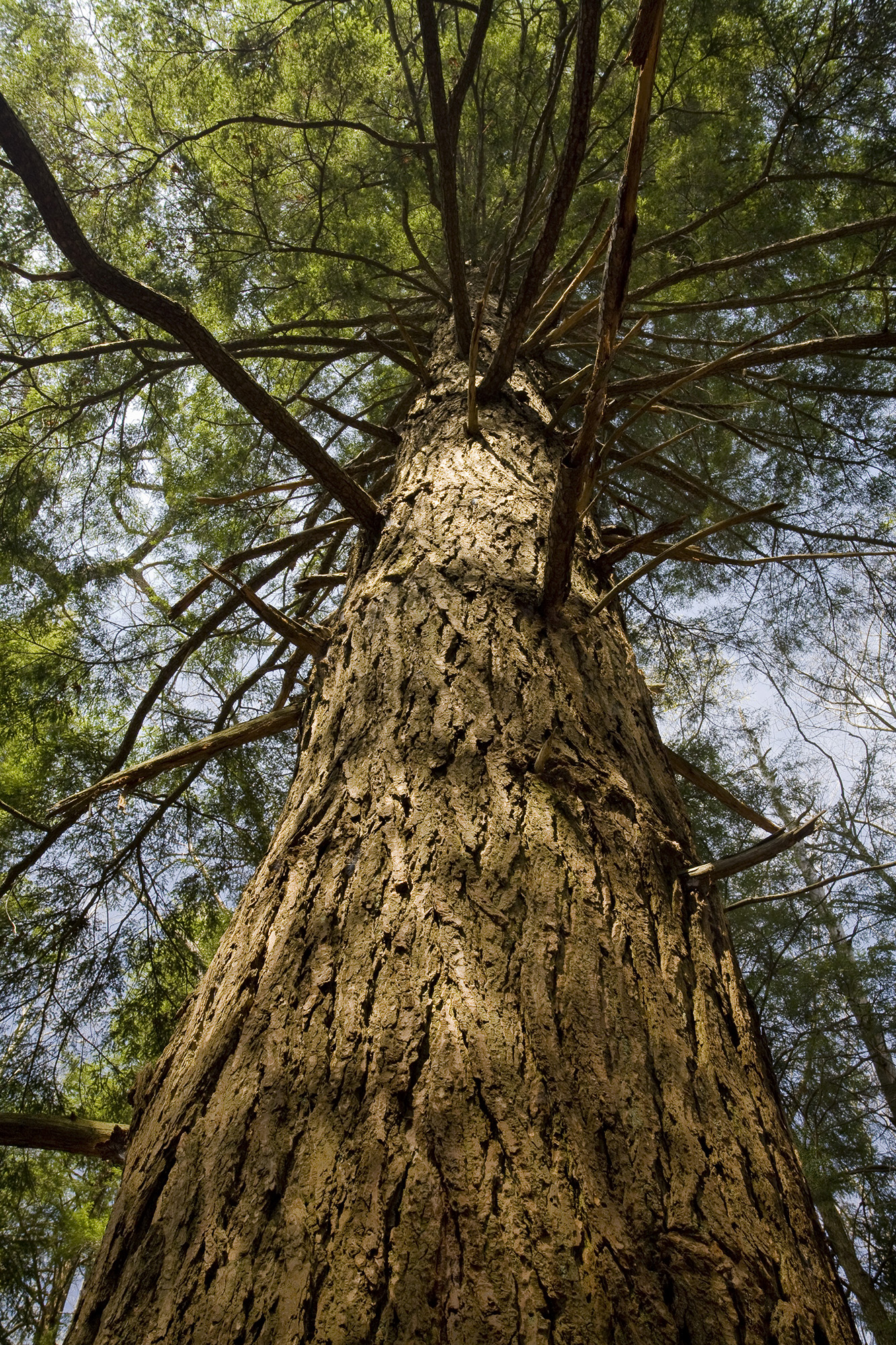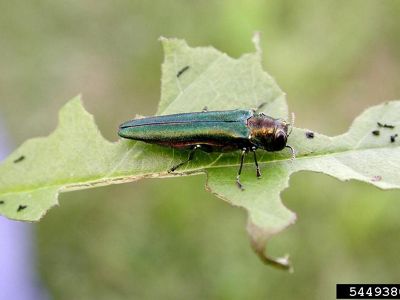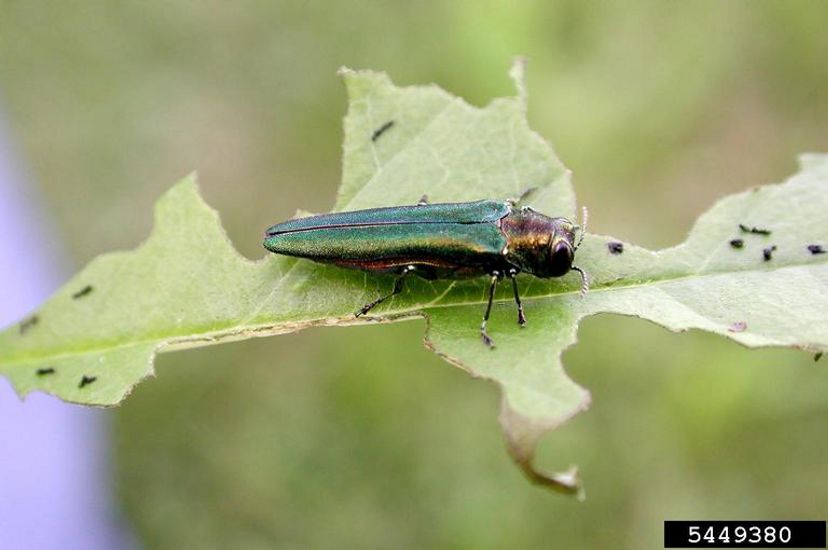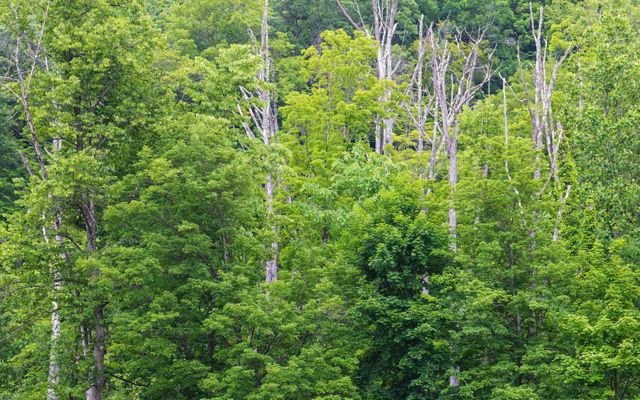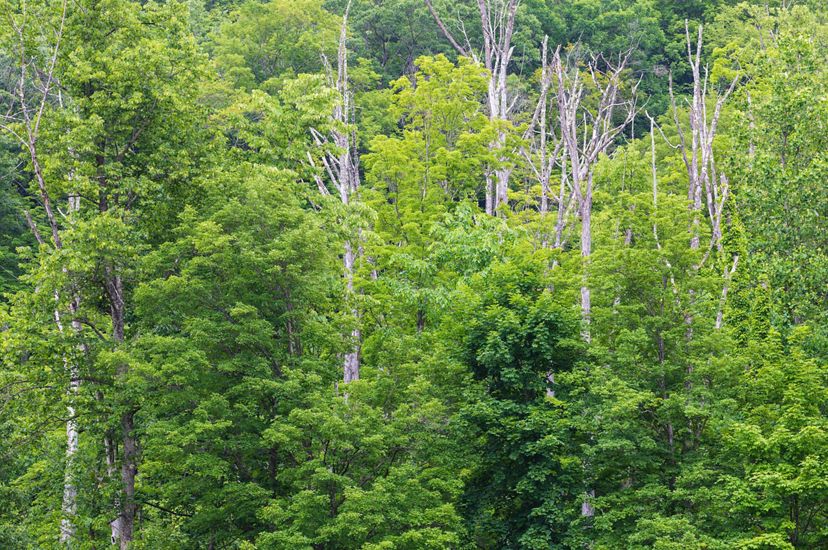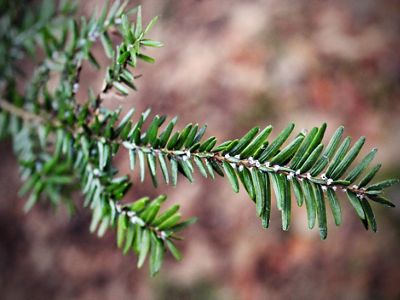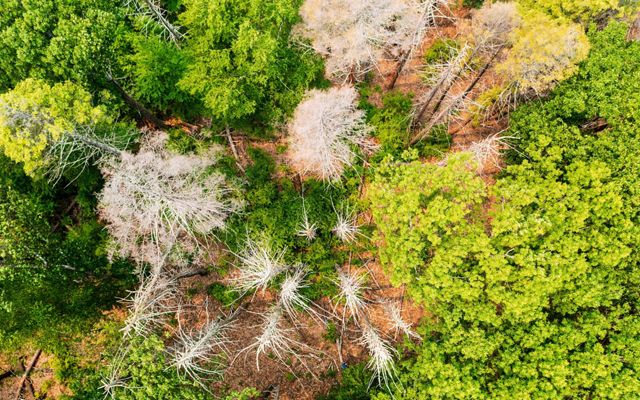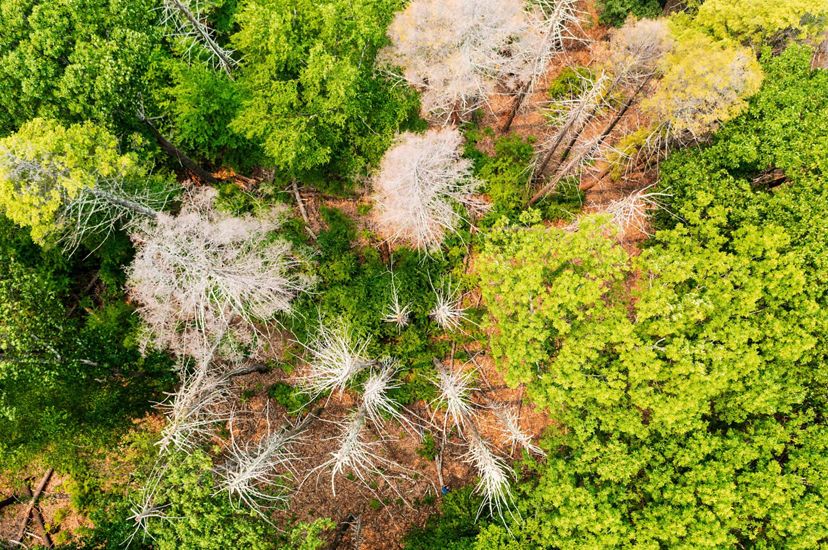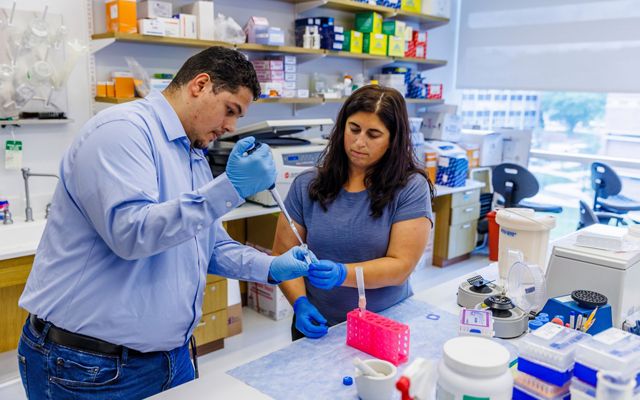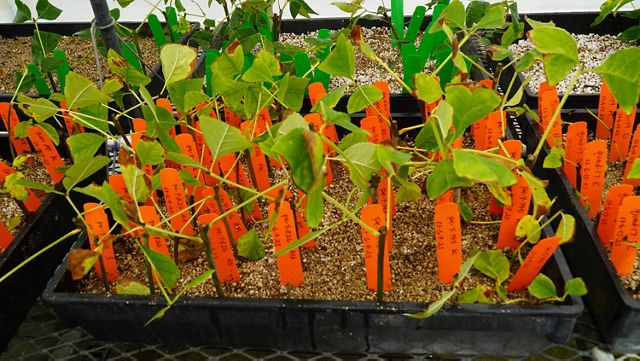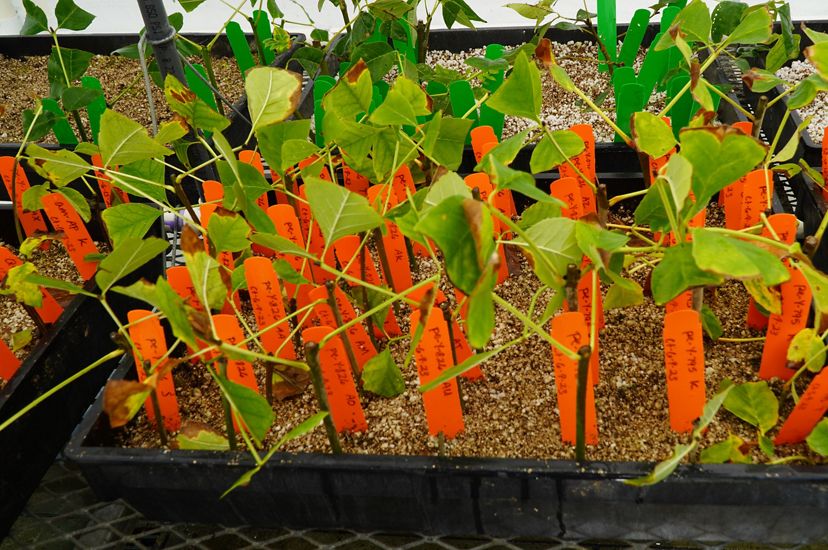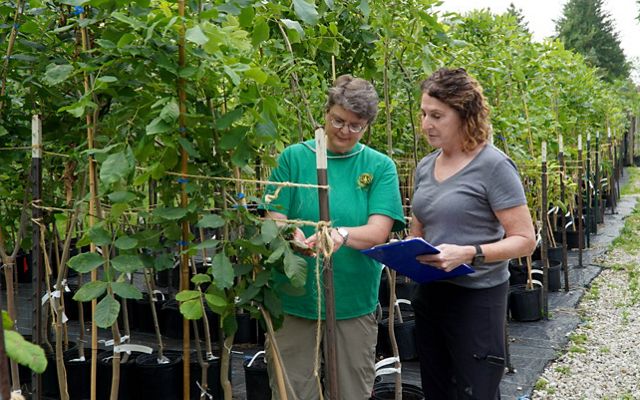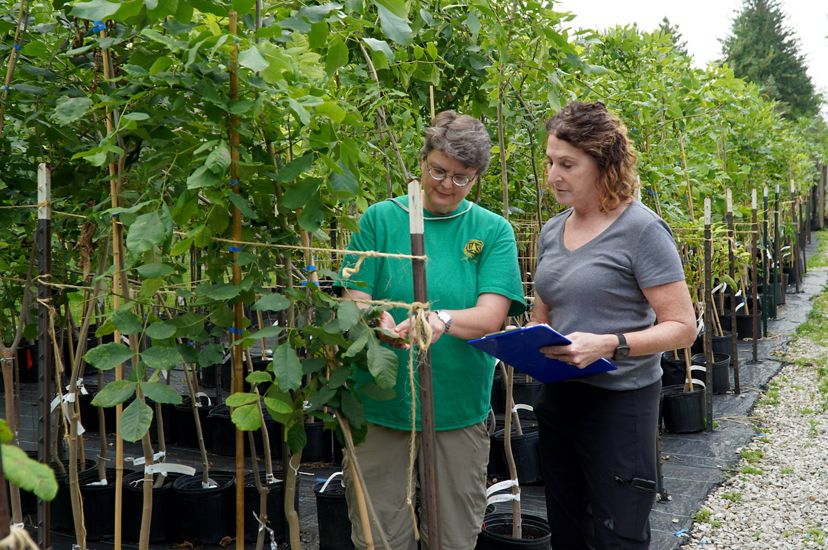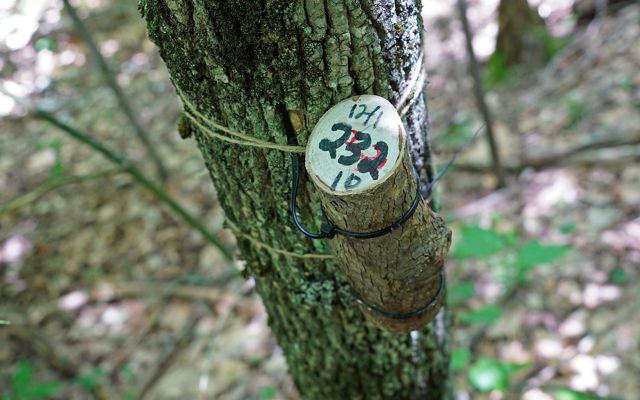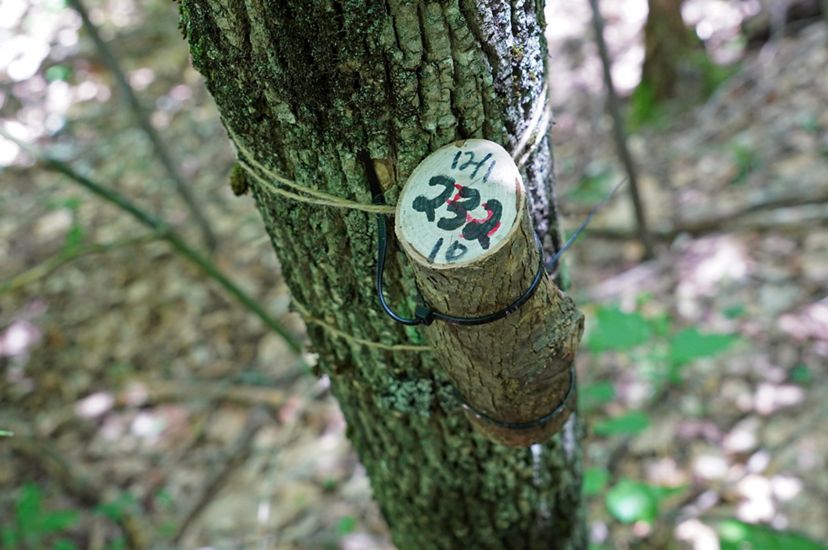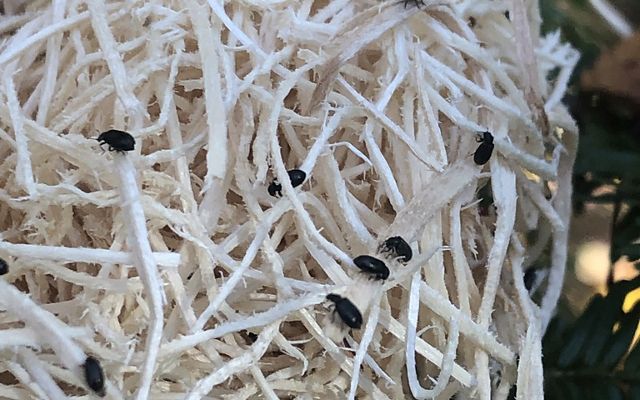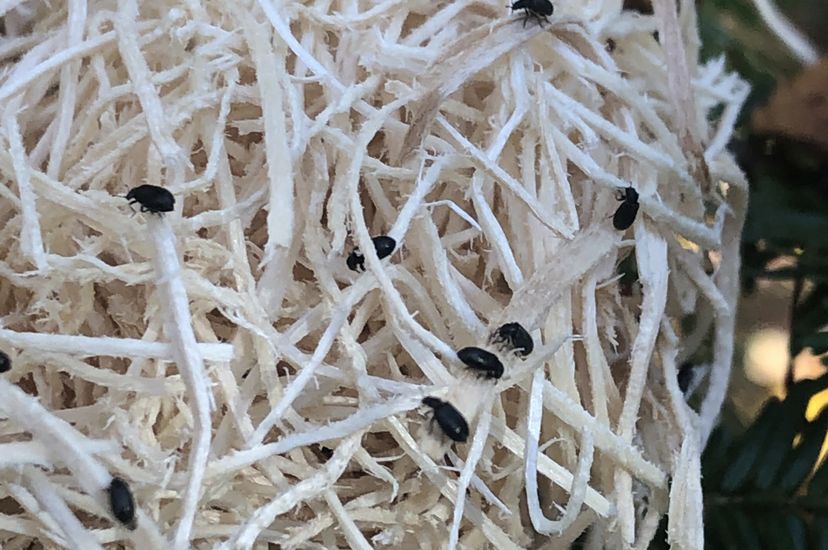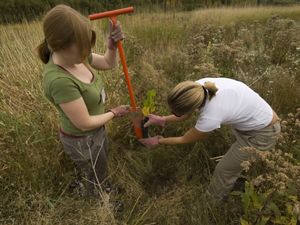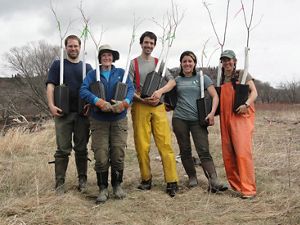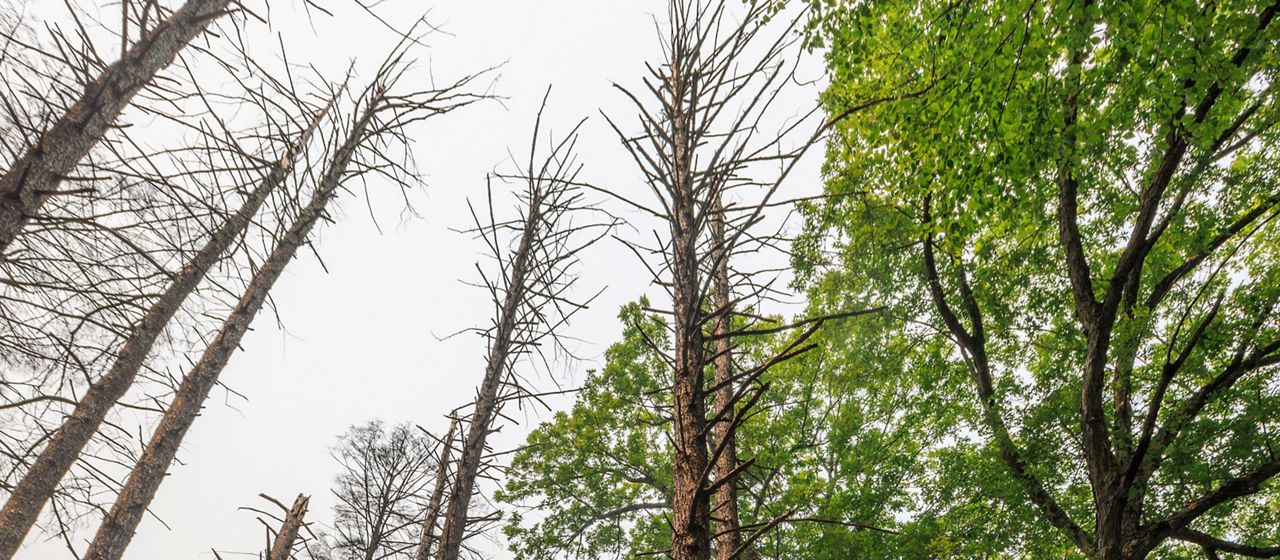
Hemlocks in Peril Eastern hemlocks (Tsuga canadensis) killed by invasive hemlock woolly adelgid in New York's Mohonk Preserve. © Jerry and Marcy Monkman/EcoPhotography
In waves across the land, some of North America’s iconic tree species are dying from a myriad of non-native pests and pathogens. Pests such as emerald ash borer and hemlock woolly adelgid are capable of—and in some places are—removing entire species of trees from whole regions in a few short decades.
This has huge implications for both forests and people. The potential loss of these trees can have impacts on wildlife, local economies, regional culture, and our forests’ ability to help fight climate change. Healthy forests that once harbored wildlife and stored large amounts of carbon can transition into thickets of invasive plants in just a few years when pest infestations reach their peaks. Due to the introduction of, non-native pests, our forests are experiencing unprecedented damage from these insects and diseases at a time when protecting and restoring forests is one of our most important options for addressing climate change.
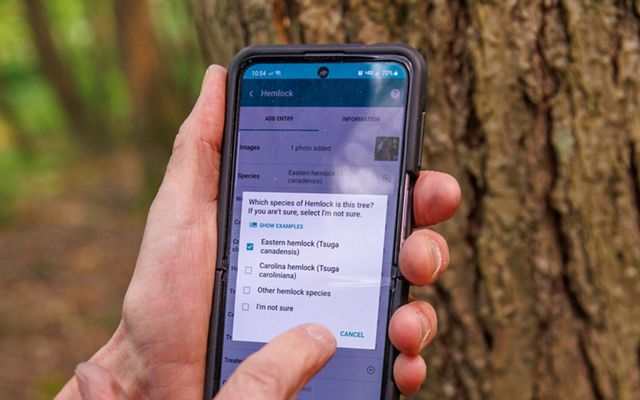
YOU Can Help Save These Imperiled Trees!
Some of North America’s most imperiled trees manage to live even after being exposed to pests or disease. These “lingering trees” may hold the genetic keys to breeding trees resistant to those very threats. TreeSnap is a mobile app that lets anyone—from backyard birder to trained forester—help identify and locate lingering trees.
Download TreeSnap!
As these pests and diseases spread, researchers are racing for ways to save the affected tree species. One approach centers on the fact that some individual trees manage to survive these threats. These "lingering trees" may have genetic resistance to the pests and pathogens—which means they might be the key to cultivating resistant trees that can grow into future healthy forests.
The Nature Conservancy and the USDA Forest Service are closely collaborating with experts from academia, research organizations, and other committed partners to create a uniquely multidisciplinary approach to monitor, research, and breed pest-resistant American beech, American elm, Eastern hemlock, and three of the most imperiled North American ash species.
Growing trees is a slow process—and it’s even more complicated and time-consuming when combined with efforts to breed resistant trees. There’s a long way to go, but signs of success are already emerging and scientists are enthusiastic and hopeful for large-scale success.
We visited some of the places and people who are on the front lines of this urgent effort. Here’s what we saw.
North America’s Threatened Trees
Click on each image to learn more about these imperiled trees.
Quote: Dr. Jennifer Koch
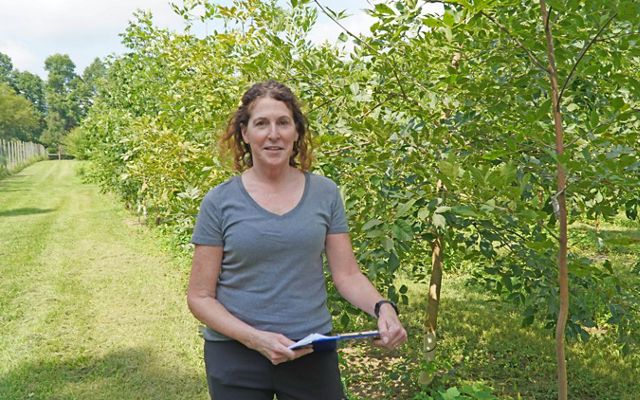
Because of the threats of invasive insects and diseases, we’re risking extinction of a lot of these species and we’re risking our forests and completely changing to something that we can’t really predict.
Our global insights, straight to your inbox
Get our latest research, perspectives and solutions to today’s sustainability challenges.
Sign upThe Threats Facing These Trees
These are the pests and pathogens that are threatening some of North America's iconic trees.
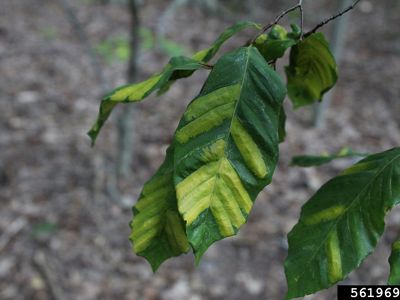
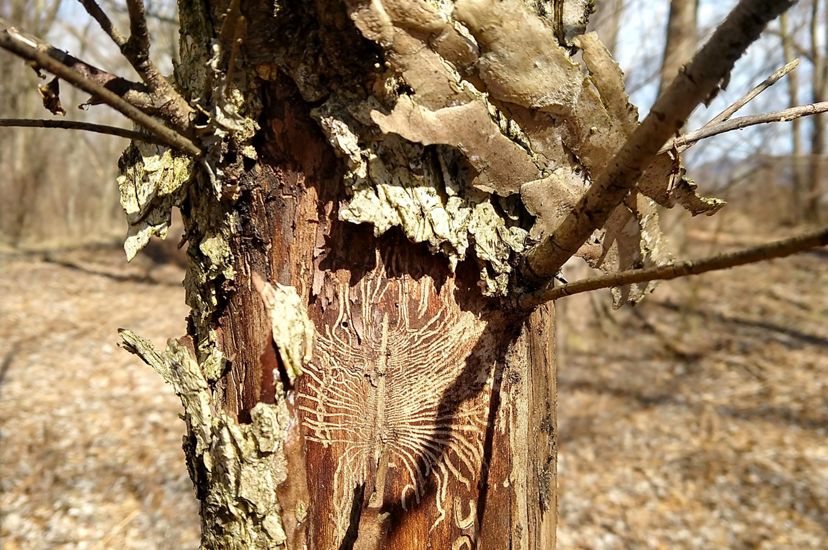
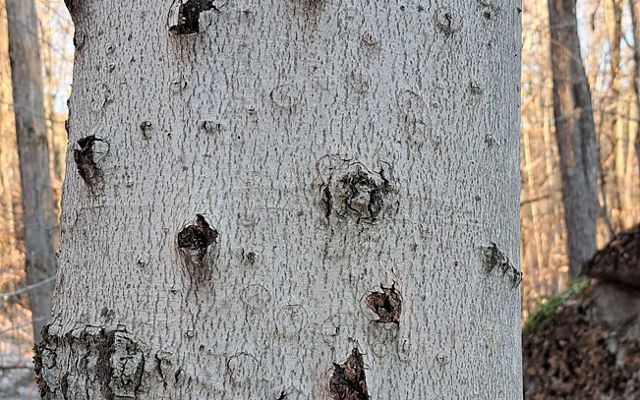
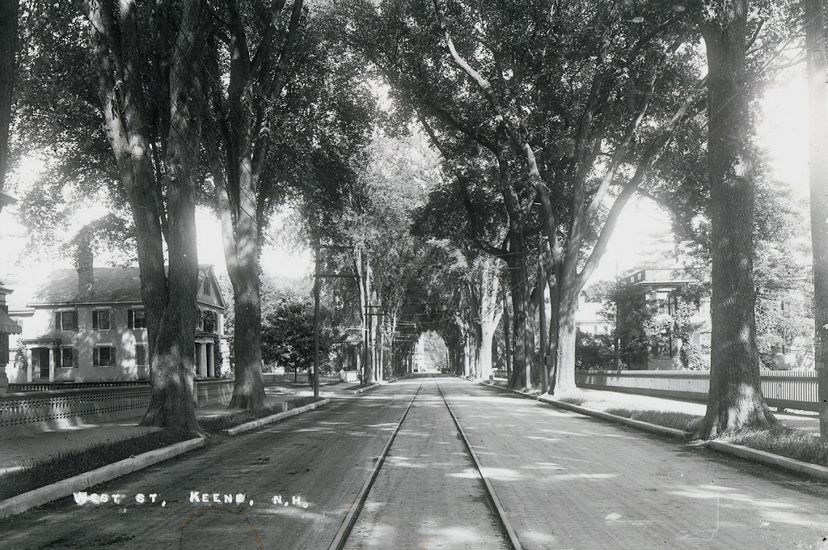
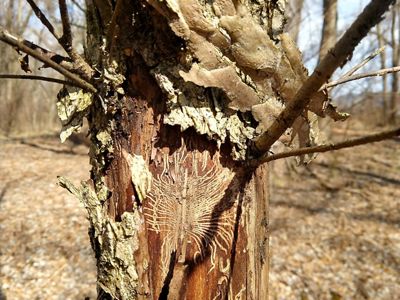

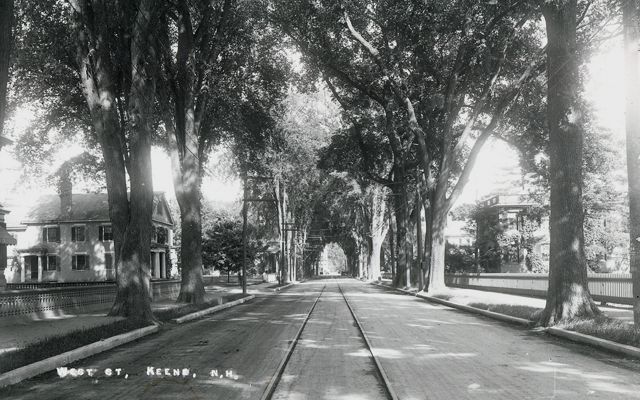

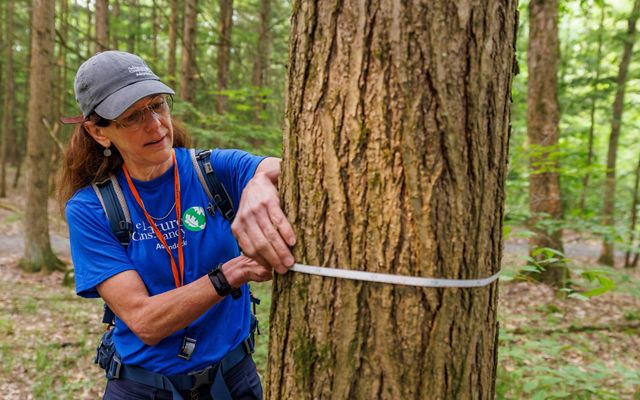
How Tree Loss Affects Climate Change
There are a few ways to look at that issue.
“We need healthy trees and forests for clean air, clean water, and their natural ability to sequester carbon from the atmosphere,” says Leigh Greenwood, Forest Pest and Pathogen Director with TNC. “Non-native invasive pest and pathogens can damage and kill trees at an unsustainable rate. To protect trees from these new threats, which are unlike the natural ups and downs that gradually create biodiversity and resilience across the landscape, we have to find and cultivate the few lucky trees that already have natural resistance to invasive species. We can use these lingering and surviving trees to create the next generation of healthy forests.”
Another way to look at the forest is the roles the trees play in ecosystem health.
Elm and ash, for instance, prefer floodplains, where they are natural water regulators, individually as trees and collectively as forests. “With climate change, the viability of these tree species becomes more important in flood or drought events,” says Dr. Kathleen Knight, a research ecologist with the USDA Forest Service. Elm, ash, and hemlock also play important roles in bird migration by providing nutritional seeds and protective shelter. As efforts improve to breed trees that are resistant to pests and pathogens, the long-term goal is to provide locally adapted seed sources that forest managers can use for their areas in a changing climate.
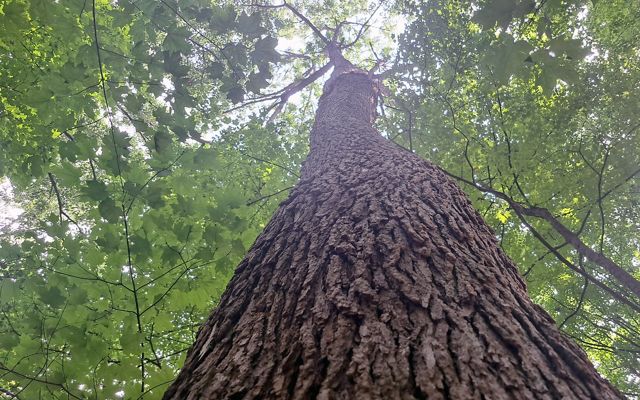
Searching for Trees Resistant to Pests and Disease
While many imperiled trees will die from pests or pathogens, some are surviving. These trees offer hope that they can produce seeds for future trees that can withstand these threats. Click on the photos to learn more.
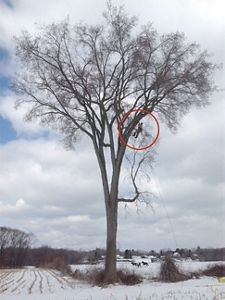
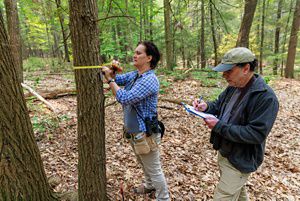
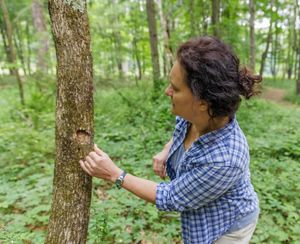
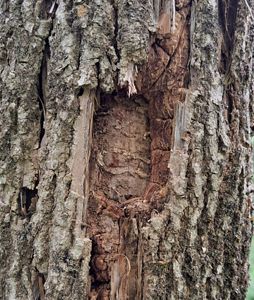

Lingering Elm: Arborist Jim McSweeney climbs an American elm in Windsor, Connecticut, to obtain twig samples for breeding for resistance to Dutch elm disease. © Christian Marks

Monitoring hemlock: Radka Wildova and Jonathan Rosenthal of Ecological Research Institute examine Eastern hemlock trees in New York's Hudson Valley. Some will withstand hemlock woolly adelgid. © Jerry and Marcy Monkman/EcoPhotography

Finding a survivor: Radka Wildova of the Ecological Research Institute examines a white ash tree in New York’s Hudson Valley that has survived the ravages of emerald ash borer. © Jerry and Marcy Monkman/EcoPhotography

Lingering Ash: This white ash tree has survived emerald ash borers and partially covered up its exposed wound with successive years of bark growth. © Eric Aldrich/TNC
These so-called “lingering trees,” a term first coined by USDA Forest Service researchers who discovered lingering ash, are mature individuals that have stayed healthy after most of the other trees have died in the same area. They have some genetic ability to resist the pest or pathogen that’s attacking that species. Genetic studies by the Forest Service have shown that selective breeding of lingering ash, elm and beech trees can yield trees that become more and more able to resist their threats. Similar studies are ongoing in hemlock.
Based on these findings, the search for lingering trees is being led on many fronts by multiple partners—and different types of searches are needed to create a full picture of resistant trees. The Ecological Research Institute, for instance, has established the Monitoring and Managing Ash program for identifying and documenting lingering ash. This approach has multiple components, including establishing a citizen-science driven monitoring plot network across the Northeast that enables identification of where and when to search for lingering ash. Identifying the individual ash trees that survive the initial wave of emerald ash borer mortality is time-sensitive and challenging work, but it allows scientists to find diverse arrays of trees that may be partially resistant to emerald ash borer.
In 2023, under the leadership of the New York State Hemlock Initiative and the Adirondack Park Invasive Plant Program, a similar protocol to Monitoring and Managing Ash was developed specifically for the needs and range of hemlock. This new research tool will allow for a systematic search for lingering hemlock across a variety of landscapes. Similar ongoing efforts are have been successful at locating many long-term survivor elm and beech.
The University of Tennessee and University of Kentucky have developed a mobile app called TreeSnap to help scientists, tree breeders, forest landowners, and community scientists monitor and record lingering trees. This app lets users record findings which enables researchers to cover a wide area in the search for lingering trees. Finding lingering trees scattered across a broad area may help create more diverse and locally adapted populations of parent trees for testing and eventual breeding.
The need for local knowledge and the urgency of this work is especially clear to the Indigenous Peoples living and working where these trees are being lost to forest pests. Among many Indigenous-led initiatives to protect these trees are those by Tribal-partnered research groups, like the Ash Protection Collaboration Across Wabanakik from the University of Maine, and Tribal Nations themselves, like the Saint Regis Mohawk Tribe near the Saint Lawrence River. Finding lingering ash, collecting seeds and building awareness can help safeguard the tree that plays important roles in Indigenous cultures, including creation stories and basket-making.
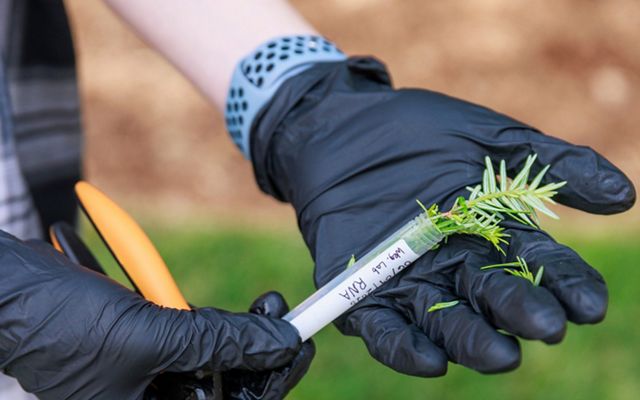
Secrets in Tree DNA
Individual trees that show natural resistance to these pests and pathogens hold clues to that resistance in their genetic makeup.
In a collaboration that includes researchers from the University of Connecticut, University of Tennessee, Notre Dame, and Penn State, scientists are analyzing genetic code from lingering trees to unlock those clues. Trees that have been tested and confirmed to be resistant can be used to determine what genetic markers might be linked to those traits—which could then enable the next steps of screening large numbers of unaffected trees for likely resistance to their particular threat.
Researchers are analyzing genetic code of hundreds of ash and Eastern hemlock trees across their native range. This will help efforts to determine adaptation strategies, understand genetic diversity at ecosystem scale, and help profile the lingering trees. Dr. Jill Wegrzyn, an associate professor and researcher at UConn, knows this work is a huge and urgent challenge, but is hopeful for success.
“We’re collecting that material and we’re sequencing that material, both to understand the diversity of what the species have to work with in terms of a genetic background, but also understand when we do find individuals that seem to have more resistance or are lingering, what parts of their genome are contributing to that,” Wegrzyn said.
Breeding Trees Resistant to Pests and Pathogens
American elm trees that survive Dutch elm disease are rare—but they have been evident across the range of elm for decades. These long-term survivors form the basis of the current elm breeding program.
But when emerald ash borer began its widespread attack of ash trees in the mid- to late-2000s, many researchers and arborists believed there would be 100% mortality among most or all of ash species—a much darker picture than the survivor elms story.
Fortunately, diligent monitoring of impacted ash stands proved that a small number of ash would linger in the forest for far longer than their neighboring trees that died from the insect. In 2007, Dr. Kathleen Knight of the USDA Forest Service was returning to her car after monitoring one high mortality plot when something stopped her in her tracks. “I found this beautiful live ash tree that looked super healthy.”
After more lingering ash were located, Knight and her Forest Service colleague, Dr. Jennifer Koch, began a diligent effort to breed these rare individual trees. The thinking was that these trees might have some genetic variation that makes them resistant to the pest, even if partially, and that by finding enough of these trees the breeding efforts could yield generations of new trees capable of killing ash borer larvae while it’s still developing under the bark.
By collecting dormant twigs from lingering trees, then grafting them onto root stock, the scientists can make genetically identical copies of each lingering tree. With lots of copies, researchers can conduct lots of tests.
Growing trees takes time. And trees—just like people—have natural defense mechanisms to thwart off threats to their health. So, as researchers keep testing and breeding their best trees with more best trees, they're seeing results. For instance, when scientists place emerald ash borer eggs on test saplings, they see that some ash trees are indeed killing the larvae within them.
When they’re confident with a process that can be scaled up to create full nurseries of trees that will resist the emerald ash borer, a network of public and private partners can help replicate the process across the native range of ash trees, such as identifying and reporting lingering ash. Ultimately, long term partnerships that are being built now will be how resistant ash is distributed, and how forests are restored.
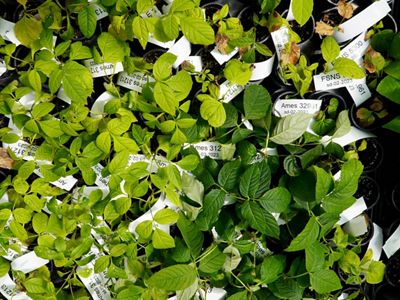
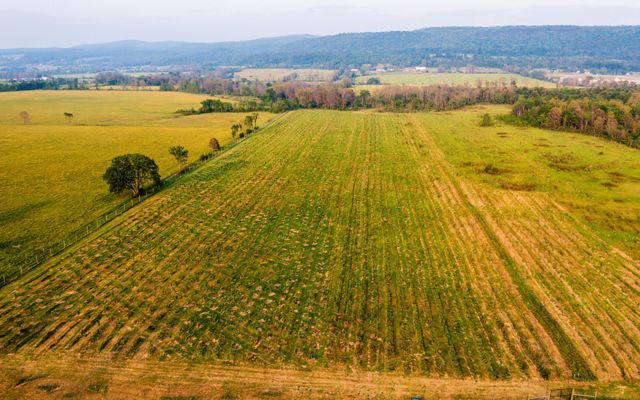
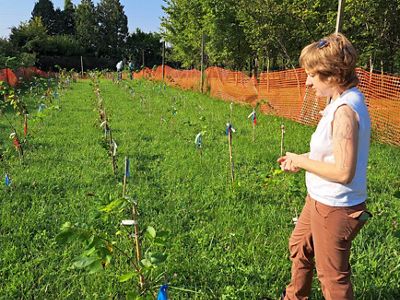
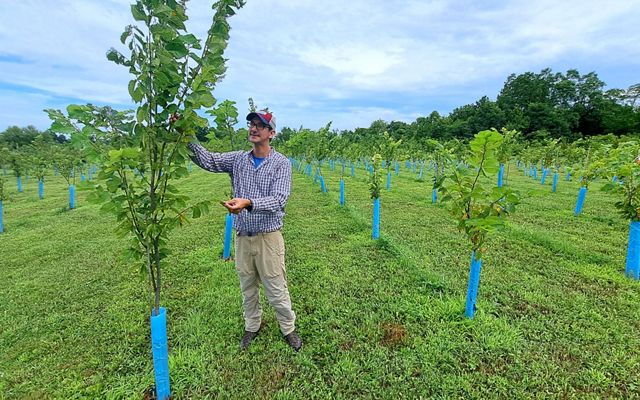
The Hope of Breeding Resistant Ash
Breeding trees that are resistant to pathogens and pests is a slow and tedious process. But it's showing signs of success. Combined with other strategies, like biological controls and seed preservation, breeding resistant trees offers hope for North America’s imperiled trees. Click on the photos to see the hope for ash.
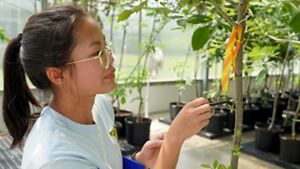
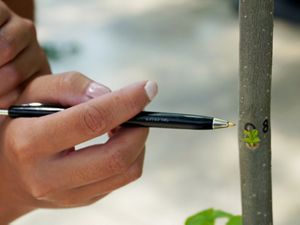

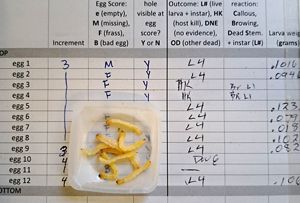
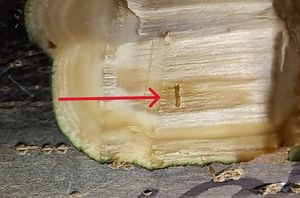

Eggs on an ash sapling: Julia Wolf, a research assistant with Holden Forests and Gardens, examines an ash where emerald ash borer eggs had been previously placed. © Eric Aldrich / The Nature Conservancy

Where the EAB was placed: Julia's pen points to a place on a young ash tree where researchers previously placed the egg of an emerald ash borer. Next, researchers will see if the larvae survived. © Eric Aldrich / The Nature Conservancy

Checking ash trees: Julia now dissects the young ash where several emerald ash borer eggs were previously placed to check for the survival rate of larvae. Some trees will kill the larvae. © Eric Aldrich / The Nature Conservancy

Emerald ash borer larvae: The larvae is pulled from ash saplings bred for resistance to the invasive insects. Some, but not all, saplings actually kill the larvae. © Eric Aldrich / The Nature Conservancy

Success! Killing the larvae: This is a cutting from an ash tree bred for resistance to emerald ash borer. The arrow points to a place in the tissue where the tree has killed the emerald ash borer larvae. © Eric Aldrich / The Nature Conservancy
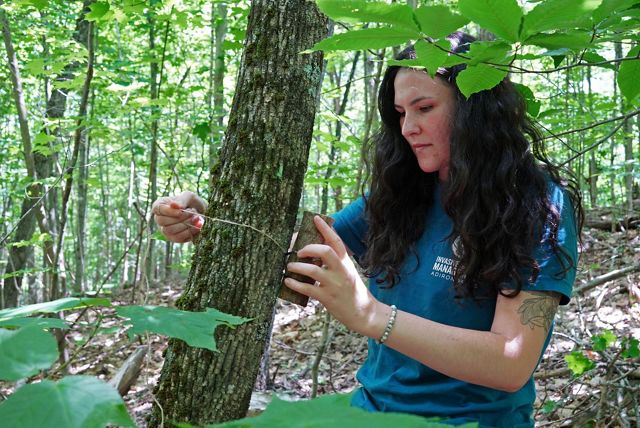
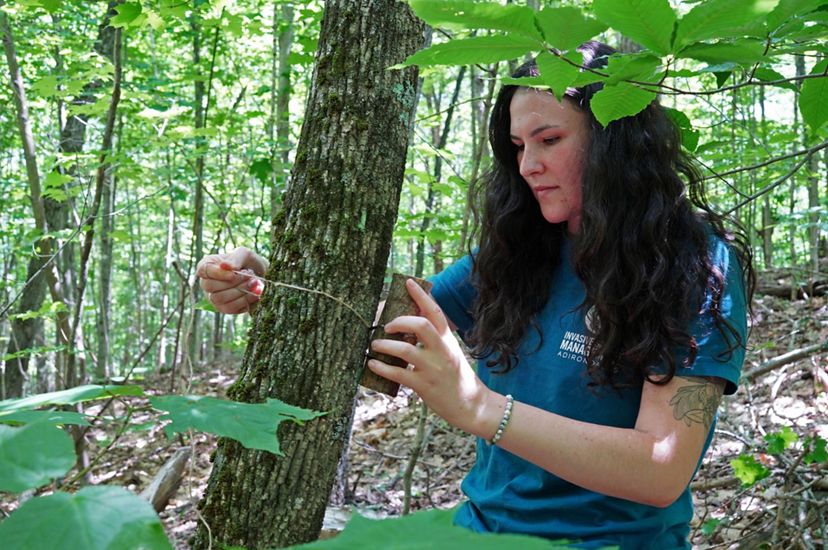
Saving Trees with Biological Controls
Another strategy to save North America’s imperiled trees are biological controls—the use of other living organisms, like bacteria or insects, to reduce or eliminate threats posed by invasive species.
A variety of bio-controls are being used to help save these imperiled trees. With ash trees, for instance, several species of small wasps are natural enemies of emerald ash borer. Some wasp species eat the ash borer larvae, while other wasps lay eggs inside the ash borer larvae, eventually killing their host. One study found that the wasps killed 20-80% of emerald ash borer in the portion of infested ash trees that they laid eggs in.
Bio-controls alone won’t eradicate emerald ash borer. But these well-studied species have been used successfully in the past to reduce the intensity of invasive species—including a history of success on hemlocks—and may be a useful tool, especially when combined with breeding and other approaches.
The Basket Tree
Indigenous Peoples have long used ash to create functional and beautiful baskets. For Wabanaki in present-day Maine, black ash (also known as brown ash locally) is central to one of their creation stories. The Wabanaki and the Akwesasne communities near the St. Lawrence River and many other Tribal Nations are actively working to save ash trees. Click on photos.
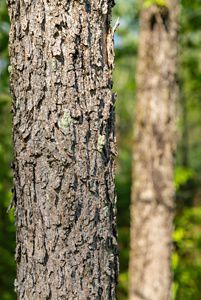
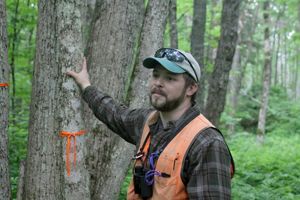
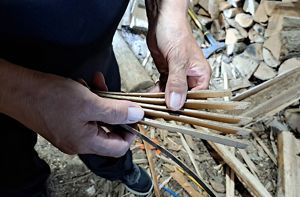
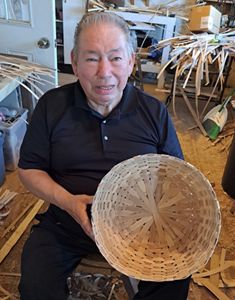

Brown Ash: Brown ash, Fraxinus nigra, has unique characteristics to its wood that allow its annual growth to be separated and used for basket-making. © Jerry and Marcy Monkman/EcoPhotography

Cultural connection: Tyler Everett, a citizen of Mi’kmaq Nation in present-day Maine, shows a brown ash during a workshop by the Ash Protection Collaborative across Wabanakik. © Eric Aldrich / The Nature Conservancy

Brown ash basketry: Richard Silliboy, vice chair of Mi'kmaq Nation in present-day Maine, shows the splints of a brown ash tree, which he will continue to process for basket-making. © Eric Aldrich / The Nature Conservancy

Weaving heritage: Richard Silliboy, vice chief of Mi'kmaq Nation in present-day Maine, weaves a basket in his studio. © Eric Aldrich / The Nature Conservancy
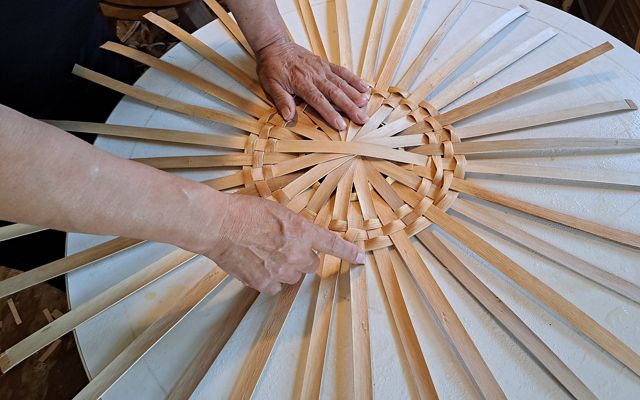
Richard Silliboy, vice chief of the Mi'kmaq Nation in present-day Maine, weaves a basket in his studio. Brown ash plays a central role in one the Wabanaki creation stories.
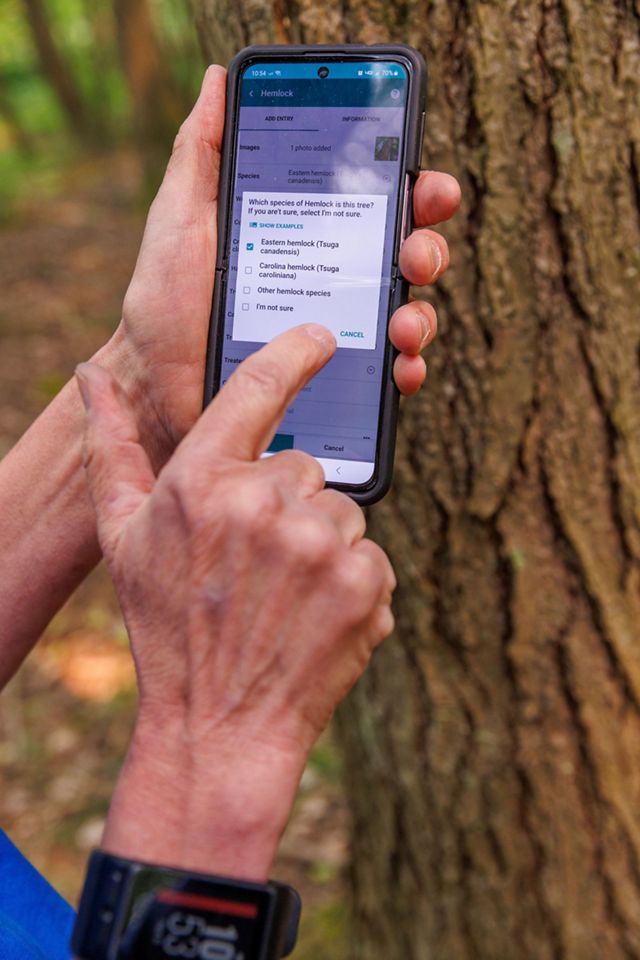
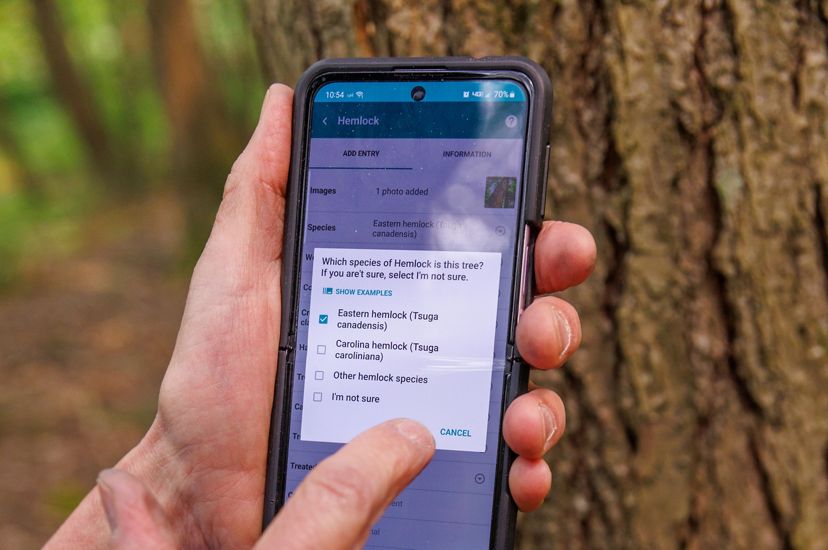
The TreeSnap App
Scientists alone can’t possibly find of all the trees that may be surviving threats of invasive diseases and pests throughout North America. They need the help of foresters, landowners, and ordinary people who see these trees where they live, play, and work.
One great tool for this challenge is TreeSnap, a mobile app that lets users virtually tag trees in their community, on their property, or out in the wild. Scientists can access and use the data for research projects like studying the genetic diversity of tree species and improving tree breeding efforts.
TreeSnap was developed as a collaboration between scientists at the University of Kentucky and the University of Tennessee. The project is funded in part by the NSF Plant Genome Research Program—with the most recent updates to the app that allow for tagging and tracking hemlock made possible through funding from TNC.
